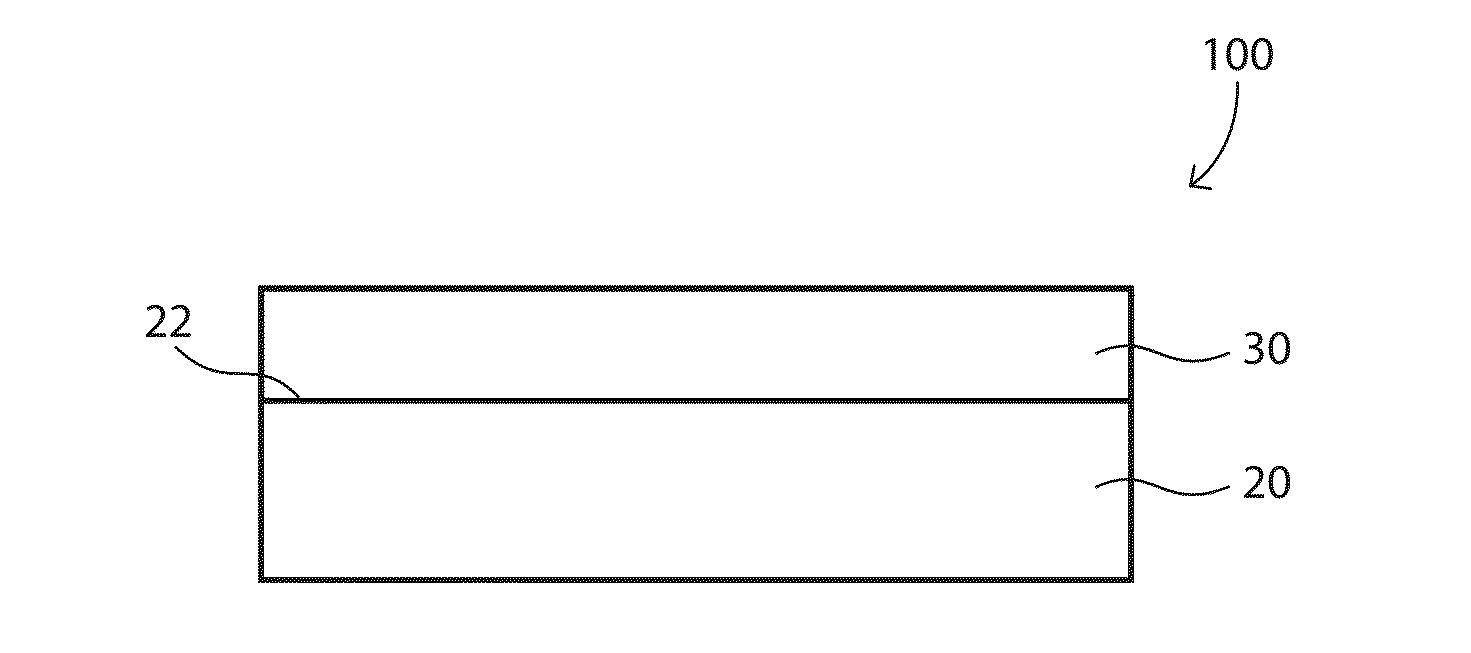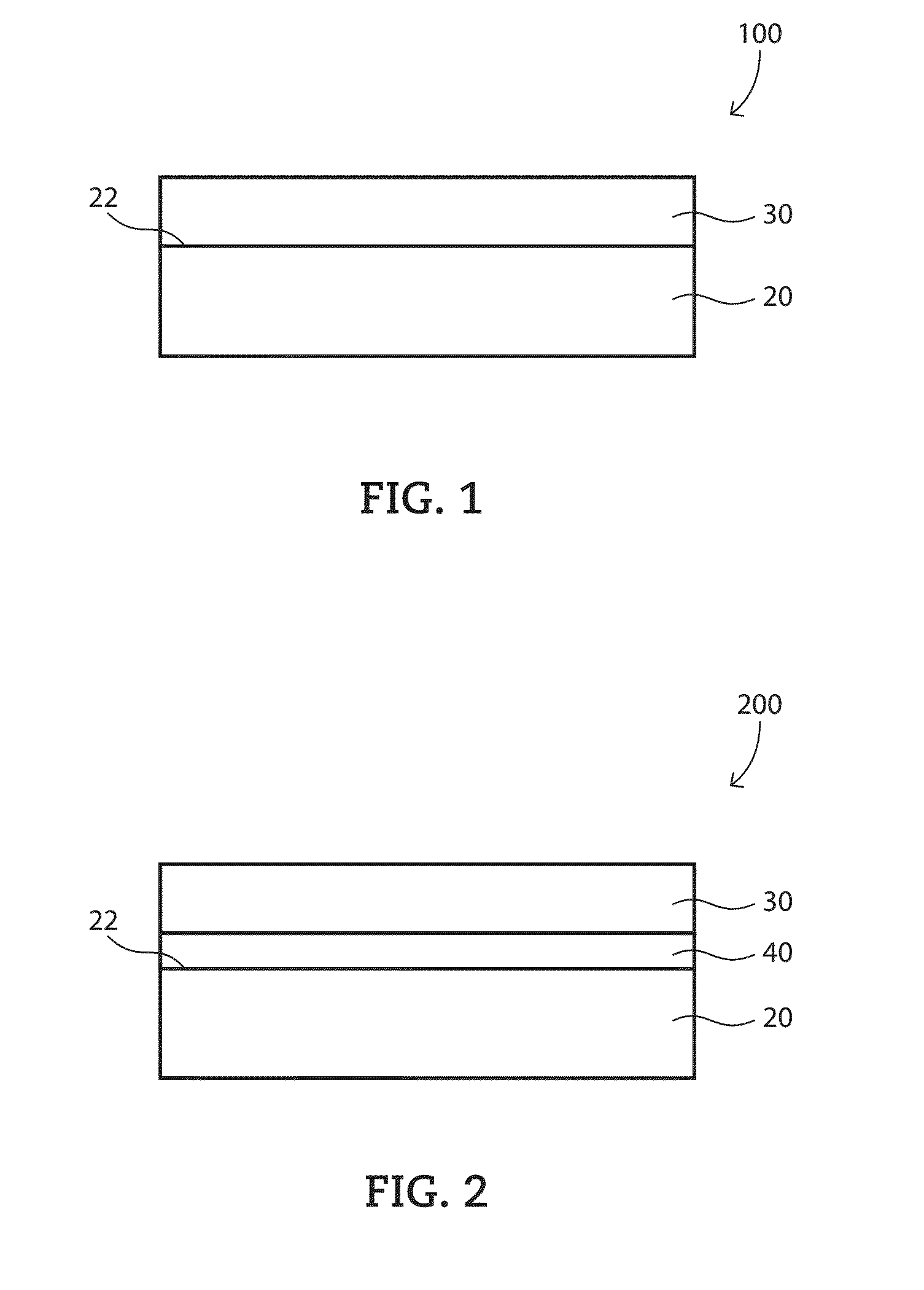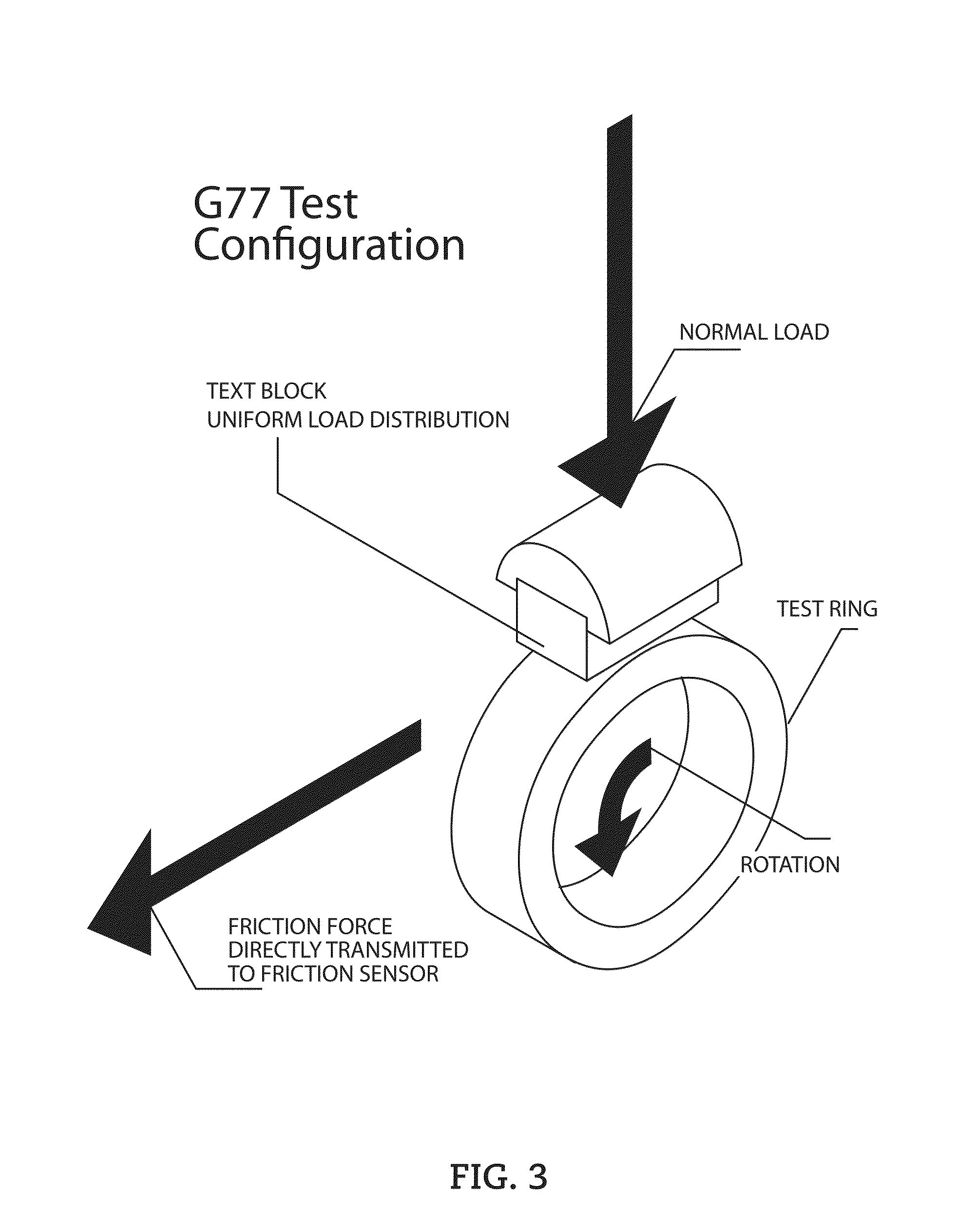Composite bearings having a polyimide matrix
- Summary
- Abstract
- Description
- Claims
- Application Information
AI Technical Summary
Benefits of technology
Problems solved by technology
Method used
Image
Examples
example 1
[0091]A two liter reactor equipped with a mechanical stirrer, a thermocouple, a Dean-Stark adapter, and a reflux condenser was charged with filler F4PN40 and xylene (425 g). The mixture was stirred at 60 degrees Celsius at 150 rpm to obtain a uniform dispersion of PTFE in the xylene solvent. Then, oxydianiline (ODA, 70 g, 0.350 mol) and N-methylpyrolidone (NMP, 433 g) were added. The solution mixture was stirred (150 rpm) and heated to 160 C under nitrogen gas to remove residual water as a xylene azeotrope using the Dean-Stark adapter. The mixture was cooled to 60 C and pyromellitic dianhydride (PMDA, 76.9 g, 0.353 mol) was added to the mixture under reaction conditions to a ratio of 1.0000:1.0085 ODA to PMDA. After addition, the reaction mixture was warmed to about 89 degrees Celsius, and became extremely viscous. The increase in temperature confirms the exothermic nature of poly(amic acid) formation. The reaction mixture was stirred and heated at 70 degrees Celsius for 2 hours, th...
example 2
[0097]Three samples were prepared and tested for coefficient of friction in dry and lubricated states and compared to the commercially available Norglide material available from Saint Gobain Performance Plastics. The three samples according to certain embodiments of the present disclosure were prepared as follows:
[0098]ODA was dissolved in the mixture of NMP and xylene. With stiffing, same molar amount of PMDA was added into ODA solution at 60 degrees Celsius, and a polyamic acid solution was obtained after two hours. The same molar amount of triethylamine was added slowly into the above polyamic acid solution to form a homogenous viscous polyamic acid salt solution. Certain amount of PTFE suspension were mixed with the above polyamic acid salt solution, and used to form a substrate.
[0099]The coefficient of friction (COF) test was performed on a Plint tester, also known as a ball-on-flat sliding test. The test was performed under two different conditions: lubricated and dry...
example 3
n
[0107]Samples according to certain embodiments of the present disclosure were prepared by coating the 25% PTFE mixture described in Example 2 onto a corona treated Kapton® release film and cured. The coating had a thickness of about 70 to 130 um. The composite was then laminated onto a zinc plated steel substrate instead of directly coating onto the steel substrate as done in Example 2. In one example, a layer of modified ETFE film was used between the steel substrate and the cured composite with the cured coating layer in direct contact with the modified ETFE film. In another example, a layer of epoxy was used between the steel substrate and the cured composite. The bearing samples were then hot pressed to cure the modified ETFE layer or epoxy layer. The COF was then measured in the dry conditions as described above in the Plint test, with the following parameters:
[0108]The oscillation frequency of the ball was 5 Hz, the distance travelled during a period was 3 cm (round trip), th...
PUM
| Property | Measurement | Unit |
|---|---|---|
| Percent by mass | aaaaa | aaaaa |
| Volume | aaaaa | aaaaa |
| Weight | aaaaa | aaaaa |
Abstract
Description
Claims
Application Information
 Login to View More
Login to View More - R&D
- Intellectual Property
- Life Sciences
- Materials
- Tech Scout
- Unparalleled Data Quality
- Higher Quality Content
- 60% Fewer Hallucinations
Browse by: Latest US Patents, China's latest patents, Technical Efficacy Thesaurus, Application Domain, Technology Topic, Popular Technical Reports.
© 2025 PatSnap. All rights reserved.Legal|Privacy policy|Modern Slavery Act Transparency Statement|Sitemap|About US| Contact US: help@patsnap.com



